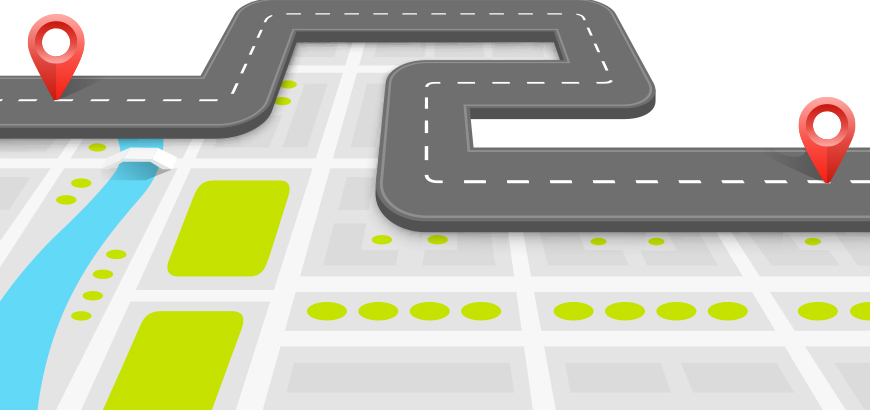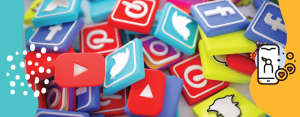The Roadmap
Laying the groundwork for a strong content marketing campaign or strategy is a lot like preparing for a roadtrip. You wouldn’t get into the car without filling the tank, packing some snacks, loading your iPod, and marking the route on your map. Similarly, you shouldn’t jump into a content campaign without building a solid plan. In order to build a relationship with your audience and create a community it is important to spend some time putting a solid plan into place. Behind every content marketing strategy should be a well-thought-out content roadmap.
What happens when you fail to put good content planning into action? Things quickly spiral out of control – as you wait for late content to arrive projects get held up and budgets are exhausted. As Gather Content’s e-book notes, this quickly leads to rushed (and poor quality) content, uncoordinated design decisions, and ultimately a bad overall experience for your readers.
To avoid losing your way or taking an unexpected detour, make sure you’ve got the right tools and know-how in place so you can begin planning your content marketing campaign. We’ve broken down the content planning process into simple steps so that you and your team are equipped to pull off a professional and high quality content marketing campaign.
Step 1: Choose a Destination
The first step of any road trip or content marketing campaign is to decide where you’re going. In other words, what do you want to accomplish? What are your goals? What is the end result? Are you looking to drive sales, create awareness, generate leads, develop a community, or promote yourself as a thought leader? You may fall under one or several of these options. If your list of goals gets long, try to establish one primary goal and list the secondary goals you will need to fulfill in order to achieve it. A great way to test the viability of your goals is to describe how they will benefit your brand or business.
Like any road trip you need to leave room for spontaneity. Your goals might change or evolve over the course of the campaign and in response to metrics that you collect along the way. QuickSprout’s handy guide to content planning reminds us that this stage sometimes feels like guesswork, and that’s okay – you need to test your ideas to see what works.
If you’re updating an existing content marketing campaign, this is a good place to conduct a SWOT analysis. SWOT stands for strengths, weaknesses, opportunities, and threats. Use this step as an opportunity to redefine your goals based on your resources, budget, and lessons learned from your previous campaigns or strategies.
Once you’ve identified your goals, spend some time thinking about a realistic time frame. Don’t forget, building a relationship with your audience takes time and requires a significant time commitment. It’s also important to think about how you intend to measure these goals. Are you measuring your success in profits? Click-throughs? Downloads? Sign ups? These are known as Key Performance Indicators (KPIs) and shouldn’t be confused with vanity metrics. Vanity metrics can be misleading; for example, if your desired result is to drive sales, don’t try to measure progress towards this goal in page views.
Once you establish a solid set of objectives, a realistic time frame, and an accurate means of measurement, you’re ready to move onto the next step – your audience.
Consider:
- What is your goal? What is the desired outcome of this content marketing campaign?
- What is a realistic time frame to achieve these goals?
- How will you measure whether you’ve met your goals? Are these KPIs or vanity metrics?
Step 2: Find Your Travel Companion
Just like content curation, content planning only works if you can identify your target audience. You wouldn’t go on a roadtrip with a friend before finding out if they have a license and can read a map (or at least operate a GPS). Similarly, you shouldn’t start producing content without giving some thought to who you’d like on the receiving end.
According to Moz, you must “keep your reader as close to you as possible in every decision you make,” so its important to figure out and understand who this might be right from the get-go. What demographics would you like to attract? What topics interest them? What medium is most appealing to this niche? Knowing who your audience is, what they’re looking for, and where they can be found will help you target them effectively.
Moz suggests surveying your existing site visitors or customers in order to create ‘typical reader’ profiles. Building customer personas will help you get a better sense of who you’re speaking to and what they’re looking for. To develop a customer persona QuickSprout recommends paying close attention the demographics (age, location, gender, income, education, marital status, occupation) and psychographics (morals, attitudes, values, interests, hobbies, lifestyles) of your ideal audience member(s). Hubspot also has a very informative infographic that walks you through the process of building a buyer persona. You’ll likely want to create several personas in order to capture your entire audience.
Consider:
- Who is your audience? What are they interested in? What are they looking for?
- What mediums and social channels do they gravitate to?
- Are there enough people in this group to meet your initial goals?
Step 3: Choose Your Mode of Transportation
Are you traveling in a luxury convertible, by motorcycle, or in a kitschy Volkswagen bus? Before you hit the road you’ll have to choose a mode of transportation. Likewise, before you create content you will need to consider not only what to create but how you’ll distribute it. Once you know your audience you can begin to think about how you can best target them. Different niches gravitate to different mediums; some groups seek and share information on Twitter, while others are drawn to blogs, YouTube, Facebook, or Instagram.
Knowing your audience and where they look for content will also help you to identify the gaps in the current content offerings. Identifying how other companies cater to a specific demographic can help you understand what sectors are being underserved and what information hasn’t been covered yet. There might be an opportunity to create a unique piece of content for your target demographics!
If you’re new to content marketing then start with the basics – tweeting, blog posts, Instagram posts. However, once you get a feel for what works and who you’re talking to, you can start getting creative. Branch out into webinars, workshops, tutorials, or newsletters. If you’re in need of some inspiration, Hubspot has created an infographic listing a number of content formats. Use these to brainstorm new ways to reach your various audience personas. The graphic includes everything from ebooks, FAQs, and whitepapers to podcasts, webinars, and online games.
Consider:
- What social channels are your audience personas most active on?
- What kind of content are they looking for?
- Who is currently serving your audience? Via which channels? With what content?
- Are there any gaps in the current content that you can fill?
- Are there opportunities to cater to this demographic in a way that has never been done before?
Step 4: Make Some Snacks, Choose a Playlist, and Fill Up the Gas Tank
A road trip requires at least 3 different types of fuel – some gasoline for the car, some food for the driver, and some music to keep you going. Similarly, Hootsuite believes that a strong content marketing strategy should follow the Rule of Thirds. This rule suggests that ⅓ of your social content should promote your business and convert readers, ⅓ should share ideas and stories from thought leaders in the industry, and ⅓ should build a personal relationship with your audience and facilitate personal interactions.
Don’t underestimate how long it takes to create a good piece of content! Research, writing, editing, and publishing are all time intensive. If you want to be at the top of your game and produce high-quality content there’s no getting around this. Establish a team with clear roles (writer, editor, designer, publisher) so that each individual knows their position in the overall creation process. To help streamline this process consider creating a digital style guide before you get going to establish universal guidelines and make sure content creation is smooth and consistent. “Planning might seem too mechanical in nature to play a role in creativity,” explains Stephen Zorio, “but it’s essential, especially in the world of content creation.”
It’s not enough to publish great content. If you want to remain relevant in this fast-paced online environment you have to publish regularly. The key to a successful content plan is a realistic publication schedule. Decide how often you’ll publish content, and to which channels. You should also set up a similar schedule for content promotion – it is equally important to establish how and where you’ll get the word out about your new whitepaper, infographic, or blog post. To make decisions about frequency and promotion think about what will help fulfill your original goal and what is realistic for the size of your team.
Consider:
- Am I following the Rule of Thirds?
- Does each team member have a clearly defined role?
- Have you established a style guide?
- What is a realistic content schedule? Do I have the resources to pull it off?
Step 5: Buy Insurance
The last thing you want on a road trip is for an accident or mechanical malfunction to bring all your planning and fun to a grinding halt. In order to make sure your content planning doesn’t meet a similar fate it might be worthwhile to invest in some insurance. This might be hiring the right people, outsourcing material so that you don’t fall behind schedule, creating an editorial calendar, or investing in software to help organize and streamline the content planning process.
There are a number of software platforms that can help marketers with the planning, execution, and measurement of a content campaign. Here at Rock Content we’re launching Projects, a tool for marketers and publishers who need to plan content strategies and measure performance across channels against their goals to prove business results. Projects allows marketers to plan content experiences, distribute them across channels, and promote material to drive audiences back to that material while simultaneously tracking conversions. Simply put, we’re helping marketers create a strong content plan and measure its success over time.
Consider:
- Is this content plan realistic? How can I scale back or step it up?
- Do you have a content calendar in place to track the type of content, where it’s published, and with what frequency?
- Will purchasing software help you to manage and measure your content plan?
Remember to always revert back to your original goal to keep you focused. It’s great to make pit stops or short detours along the way, but ultimately the goal is to reach your destination!
Hungry for more? Check out these content planning tips from the pros:
Content Marketing Planning Tips From Buffer, the Content Marketing Institute & More
Why You Need Content Marketing Planning Tools
Tips On Optimizing For Social Media, Content Engagement Planning







